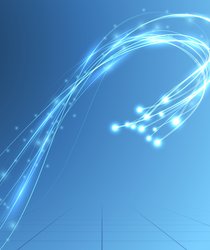
Photonics Seminar
Breaking the diffraction limit by measuring photon correlations
dr Radosław Łapkiewicz
Instytut Fizyki Doświadczalnej, Zakład Optyki, FUW
March 3, 2022, 12:15 p.m.
ul. Pasteura 5, sala 1.02
Single fluorescent emitters in biological samples are probably the most common sources of quantum light. Nevertheless, their quantum optical properties are rarely exploited. I will discuss how fluorescence microscopy can benefit from measurements of quantum correlations. Such measurements allowed counting emitters within a diffraction-limited spot [1] and enhancing the resolution of classical super-resolution methods further beyond the diffraction limit, as in the case of recently introduced Quantum Image Scanning Microscopy (QISM) [2].
We found that the classical analog of QISM relying on classical light correlations offers a higher SNR at short measurement times and is less demanding experimentally. This method, termed Super-resolution optical fluctuation image scanning microscopy (SOFISM) [3], exploits fluorescent emitter blinking as its image contrast. SOFISM offers a robust path to achieve high-resolution images with a slightly modified confocal microscope, using standard fluorescent labels and reasonable acquisition times.
[1] Y. Israel, et al., Quantum correlation enhanced super-resolution localization microscopy enabled by a fibre bundle camera. Nat.Comm. 8, 14786 (2017).
[2] R. Tenne, et al., Super-resolution enhancement by quantum image scanning microscopy, Nat. Phot., 13, 116–122 (2019).
[3] A. Sroda, et al., SOFISM: Super-resolution optical fluctuation image scanning microscopy, SOFISM: Super-resolution optical fluctuation image scanning microscopy, Optica 7, 1308-1316 (2020).
